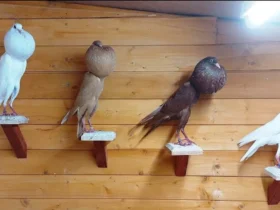In the lush woodlands of Africa, a small bird with a striking appearance and a delightful call captures the attention of birdwatchers and nature enthusiasts—the Bearded Barbet (Lybius dubius). Renowned for its vibrant plumage, unique features, and charming personality, this avian gem adds a splash of color and joy to its habitat. Let’s explore the captivating world of the Bearded Barbet and discover the remarkable characteristics that make it a true charmer of the avian world.
Bearded Barbet images
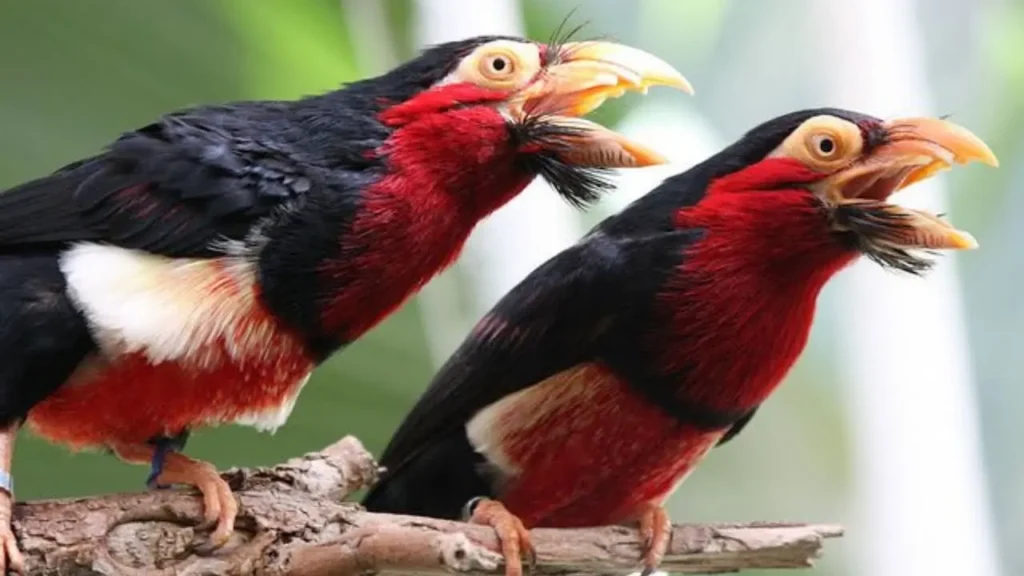
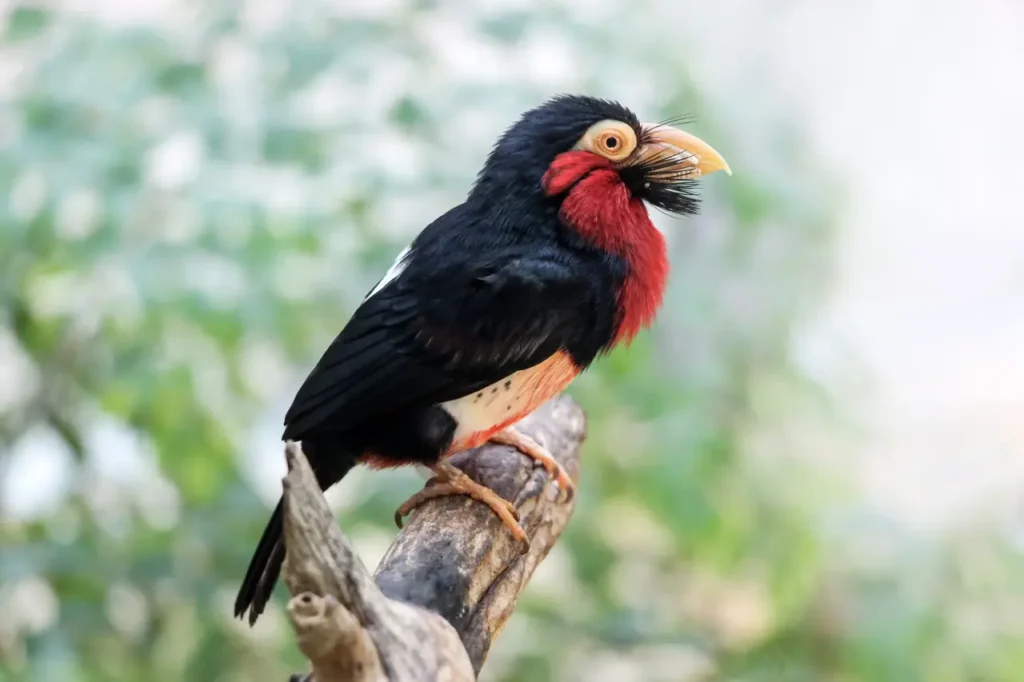
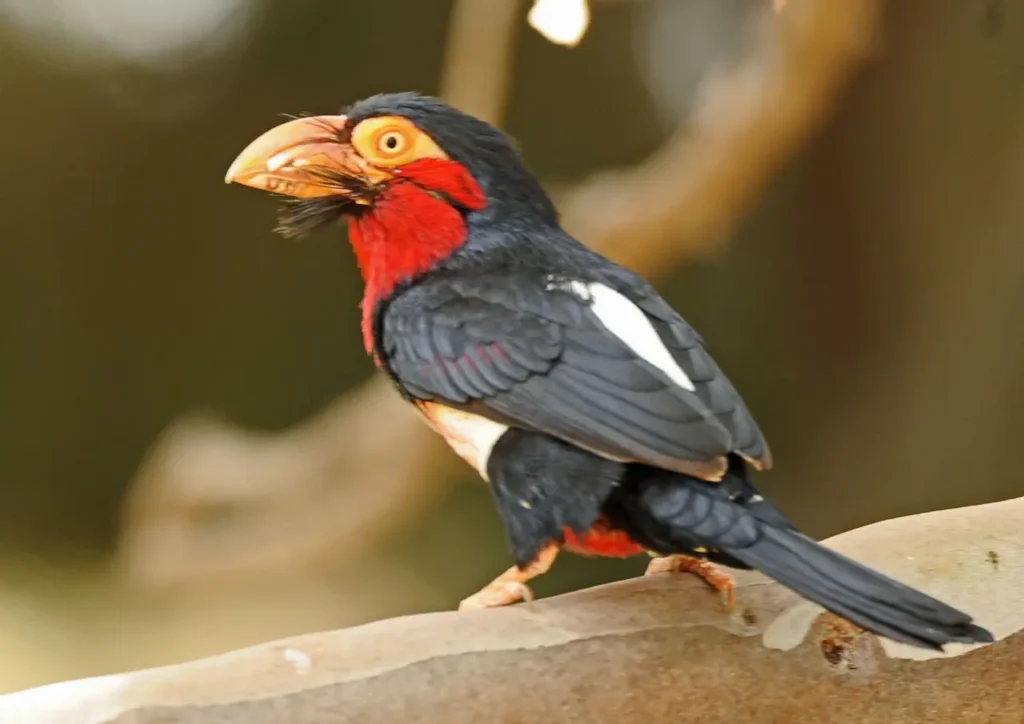
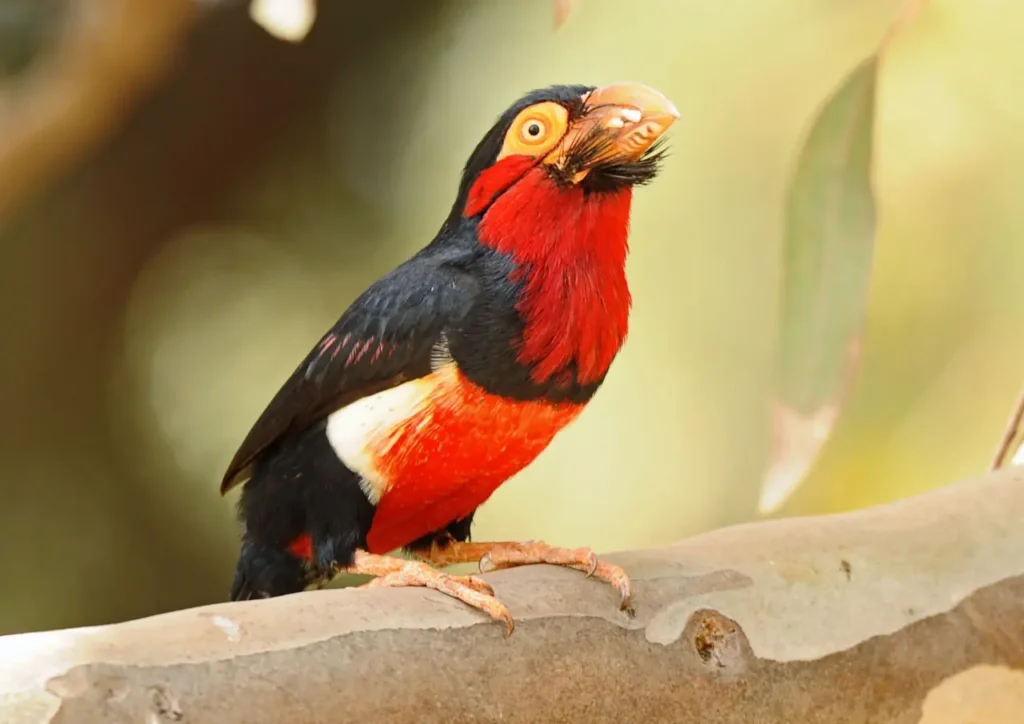
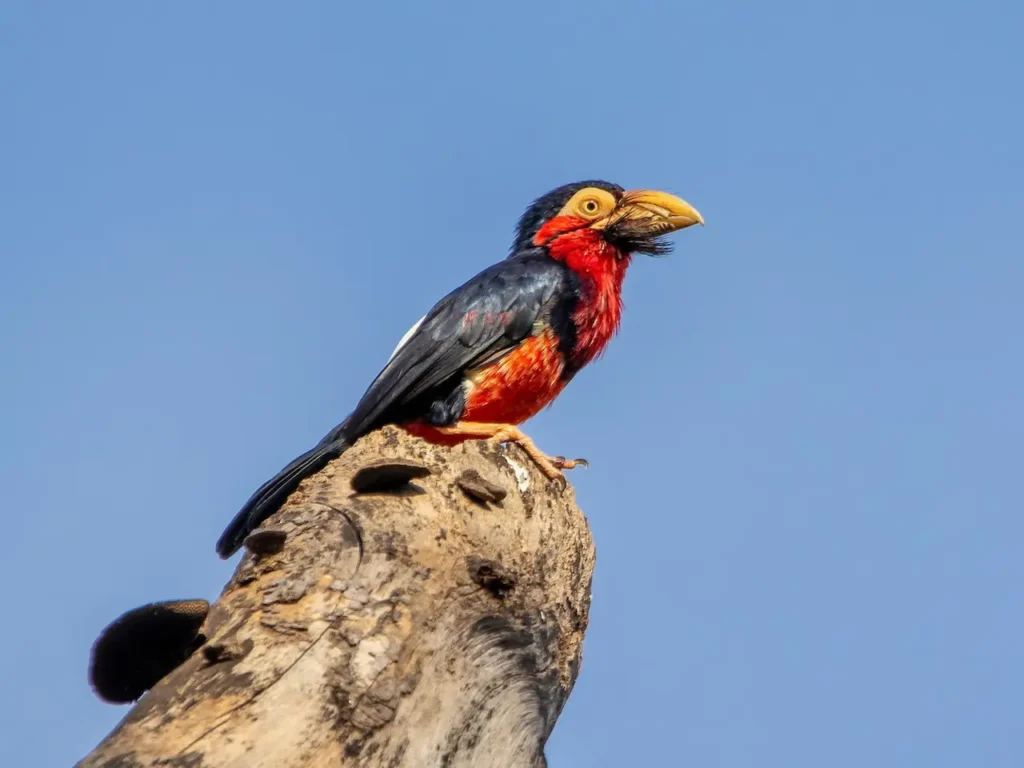
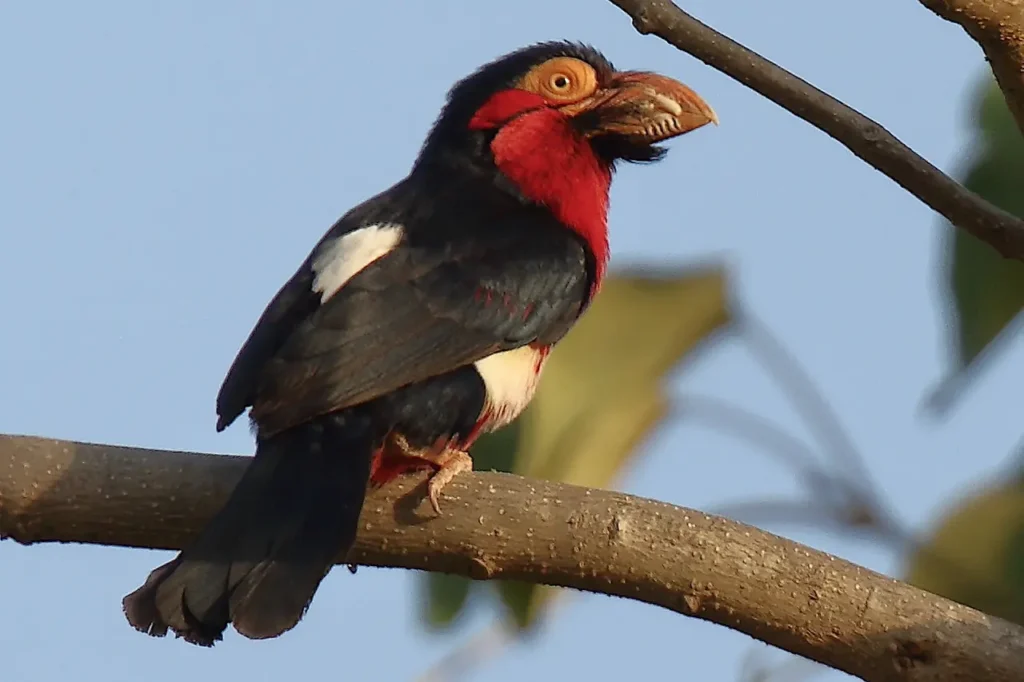
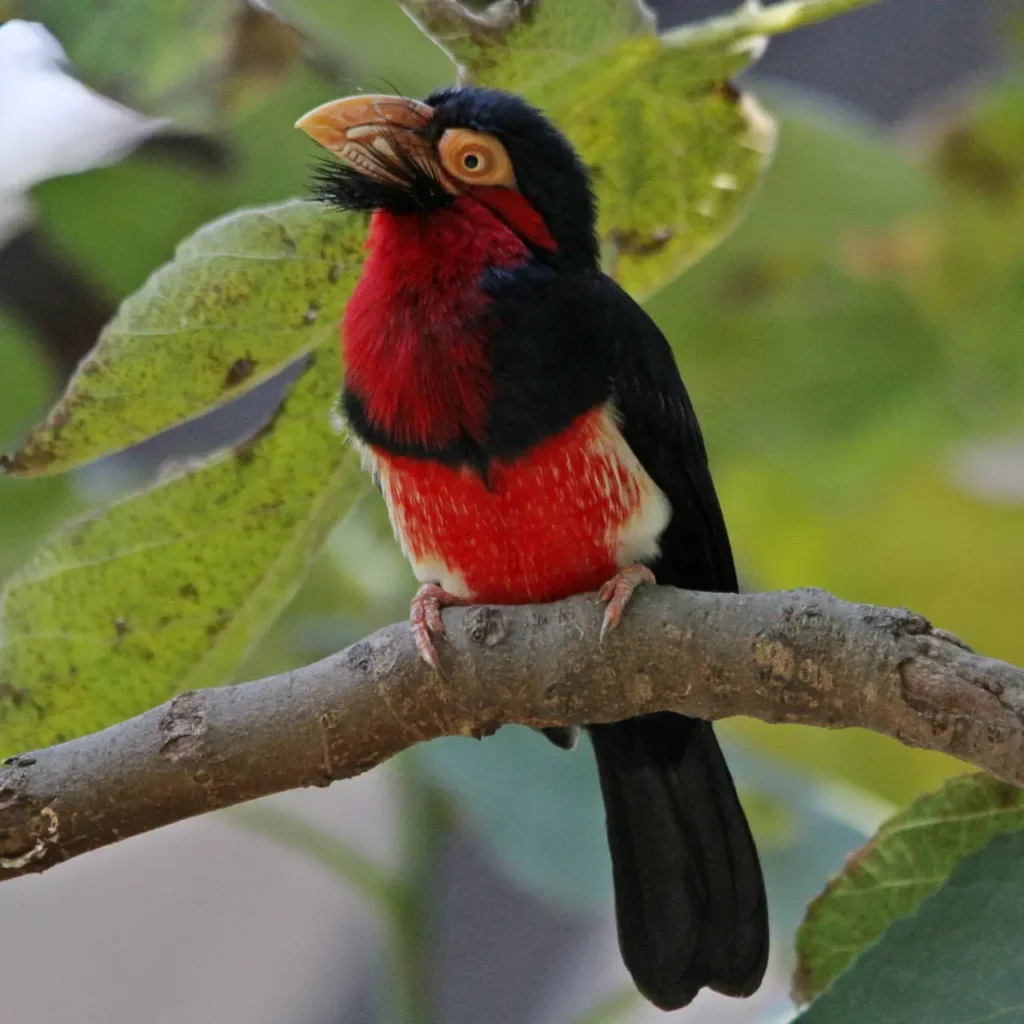
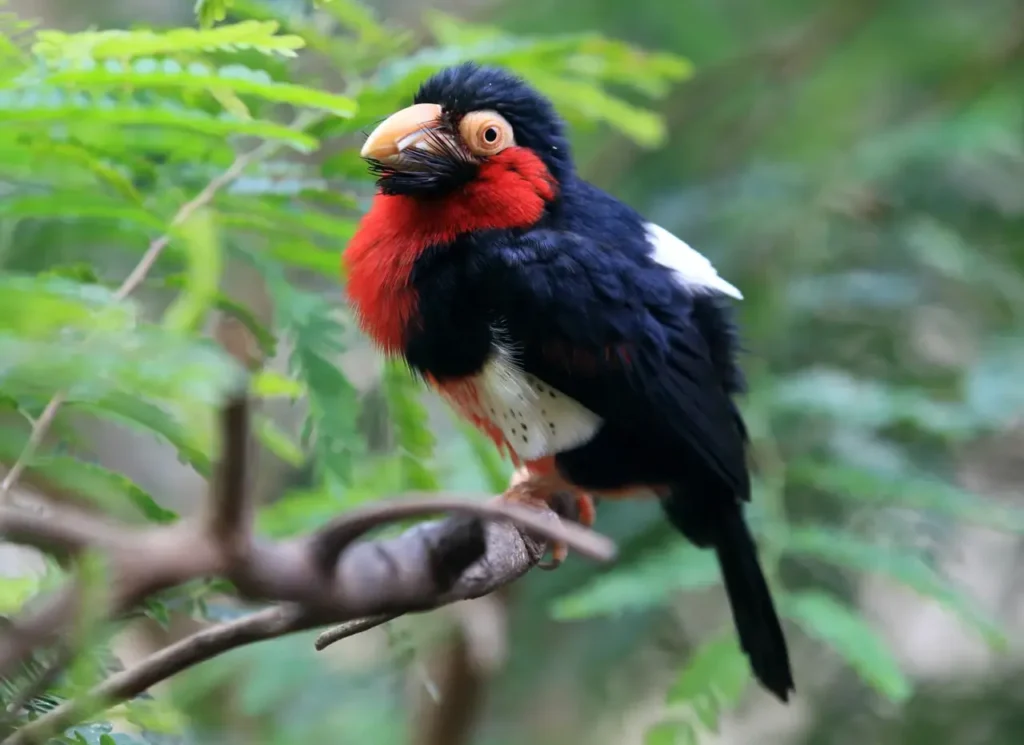
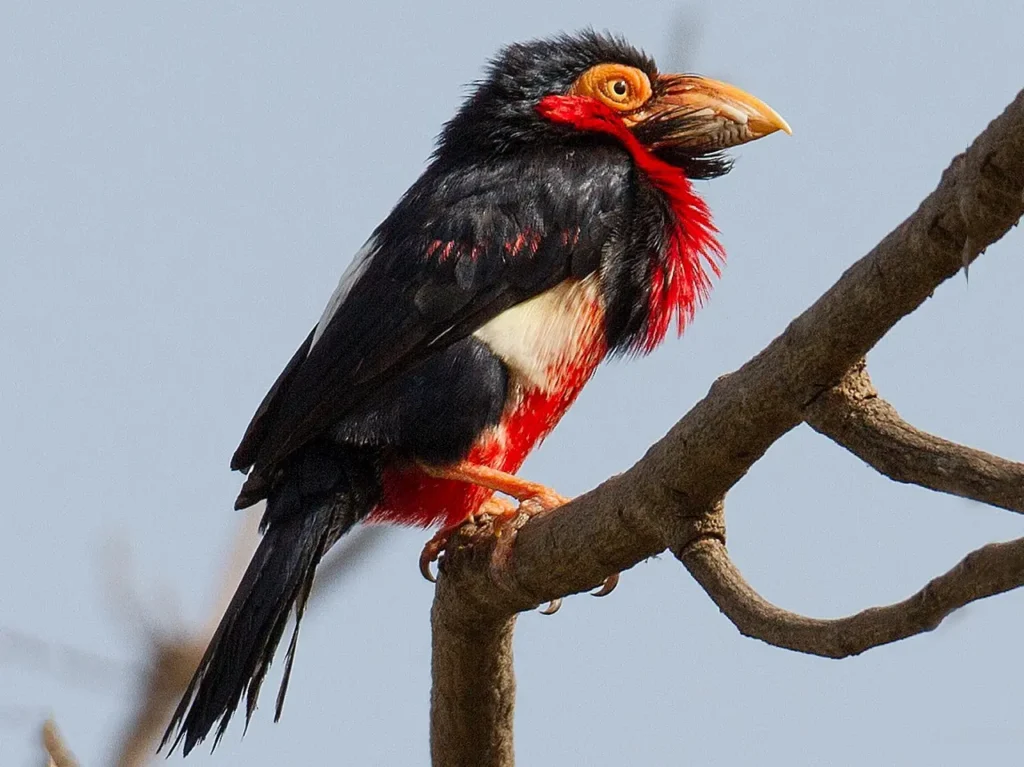
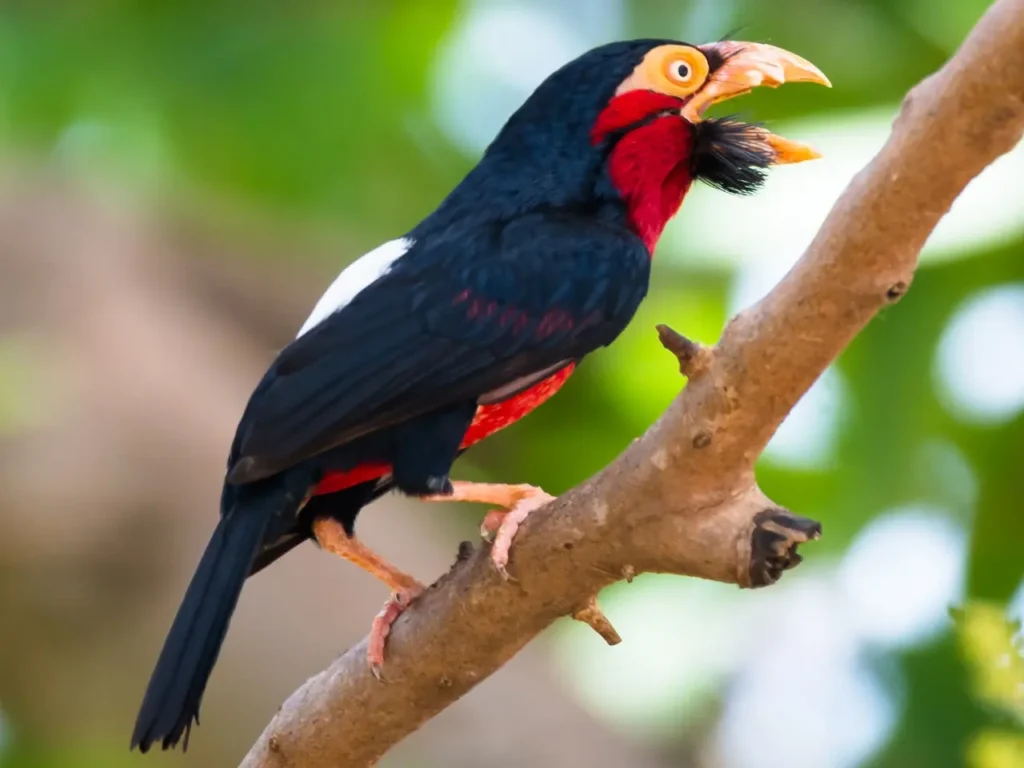
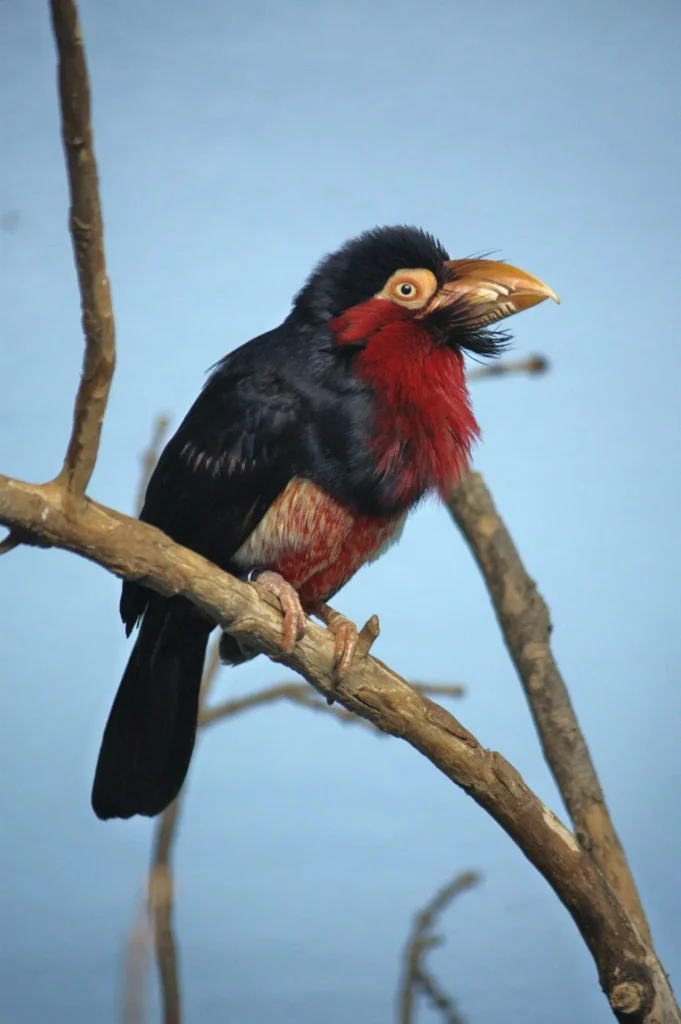
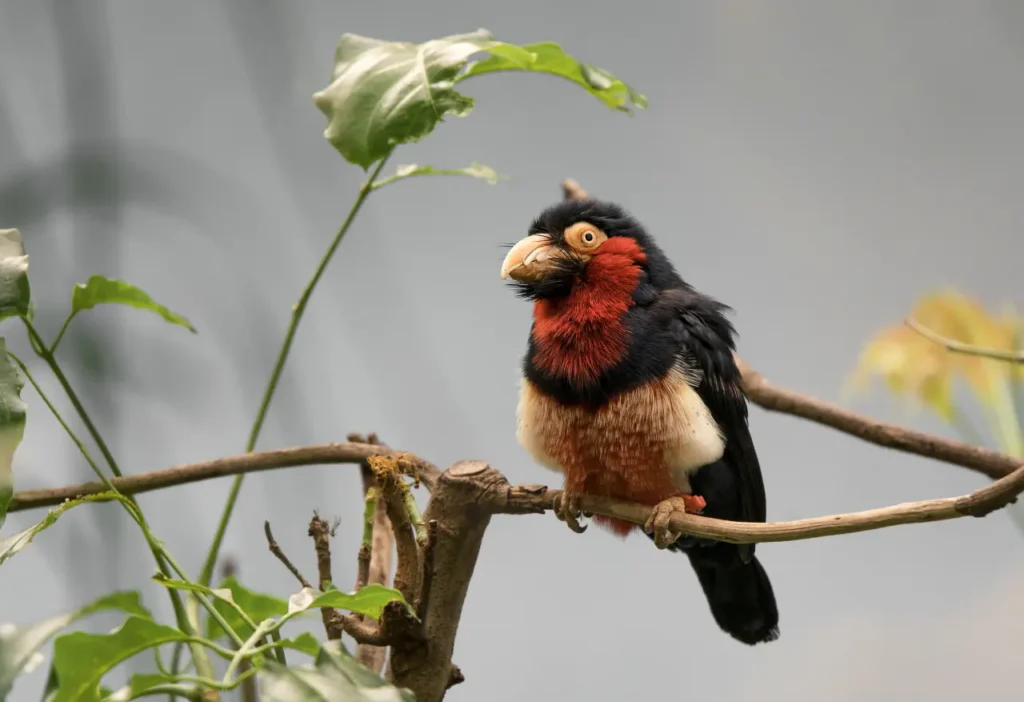
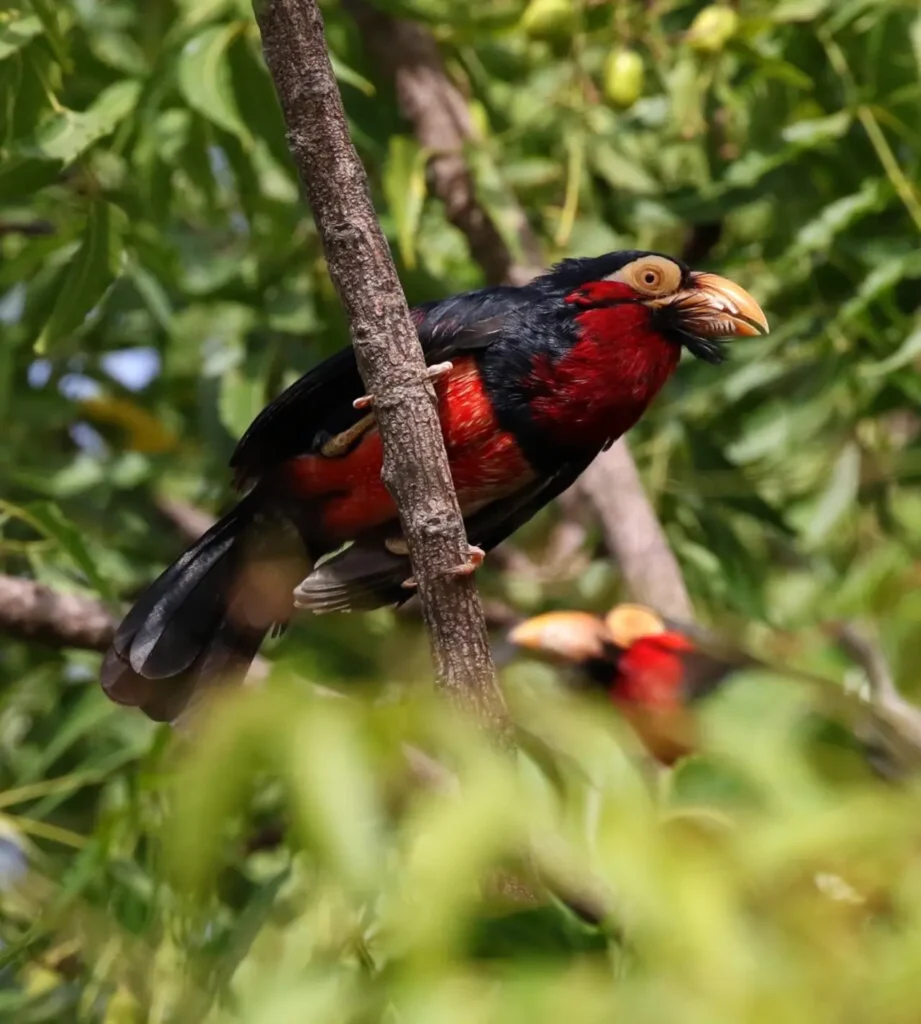
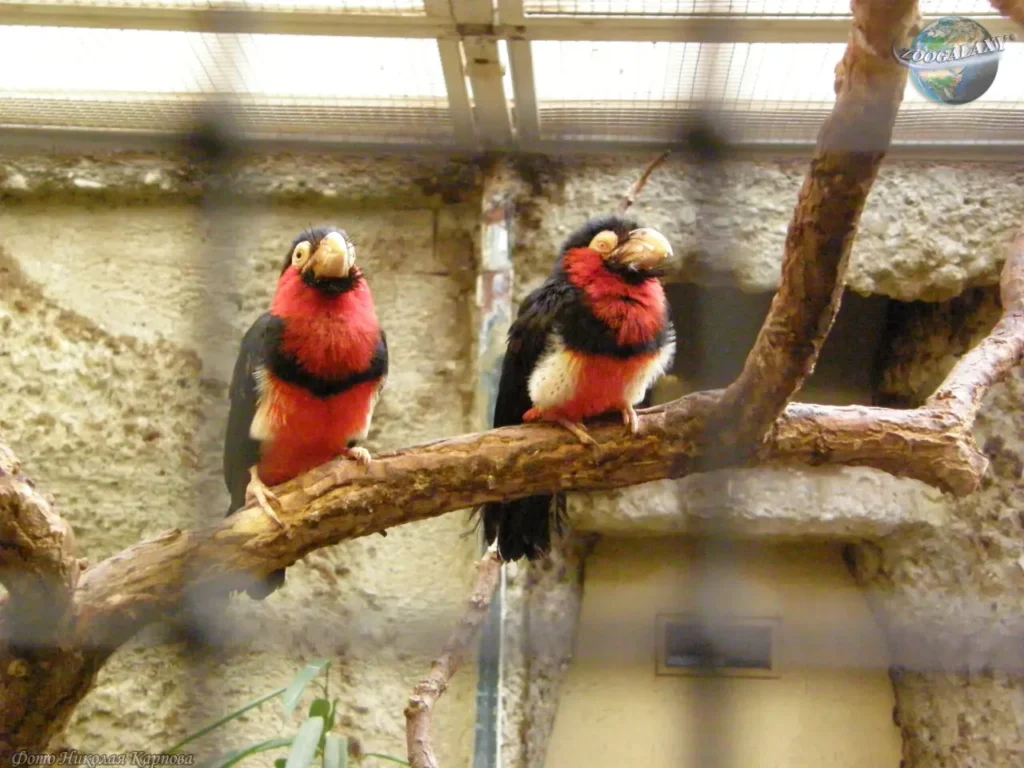
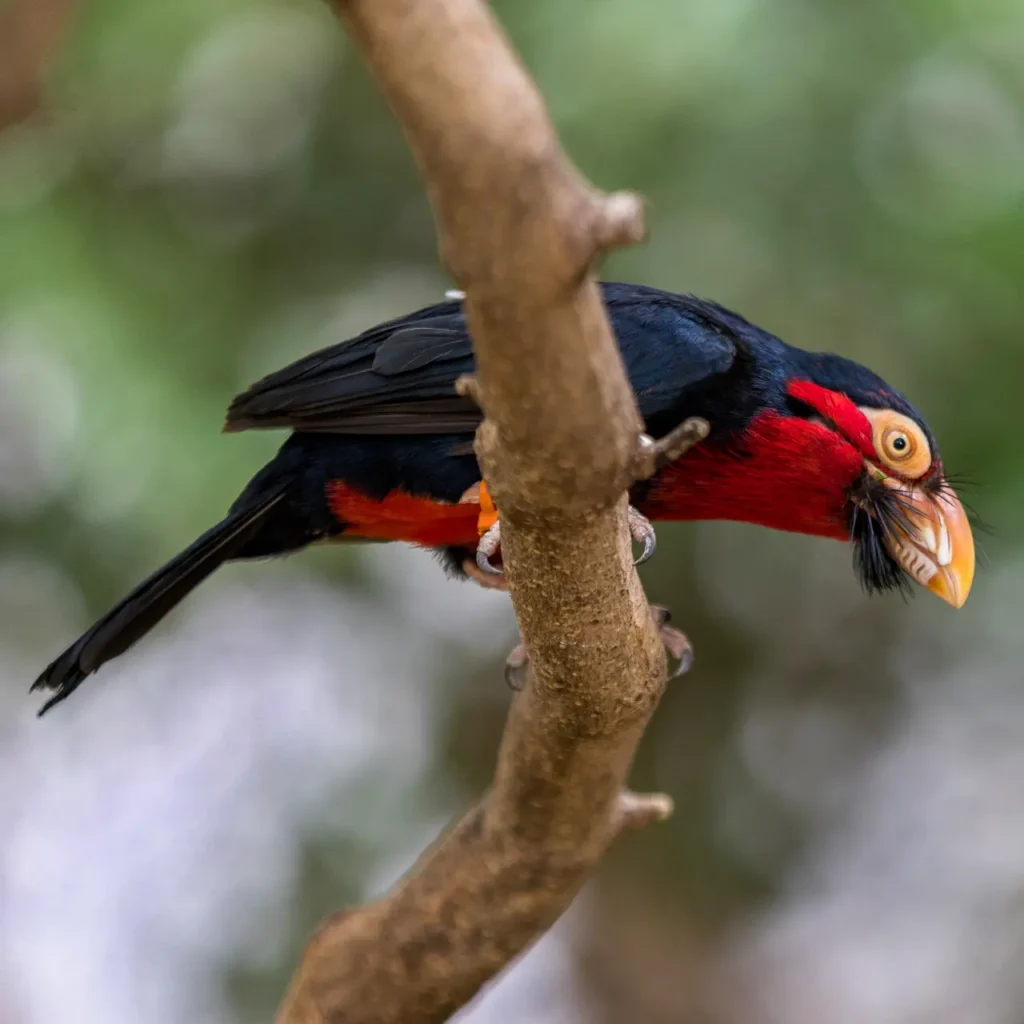
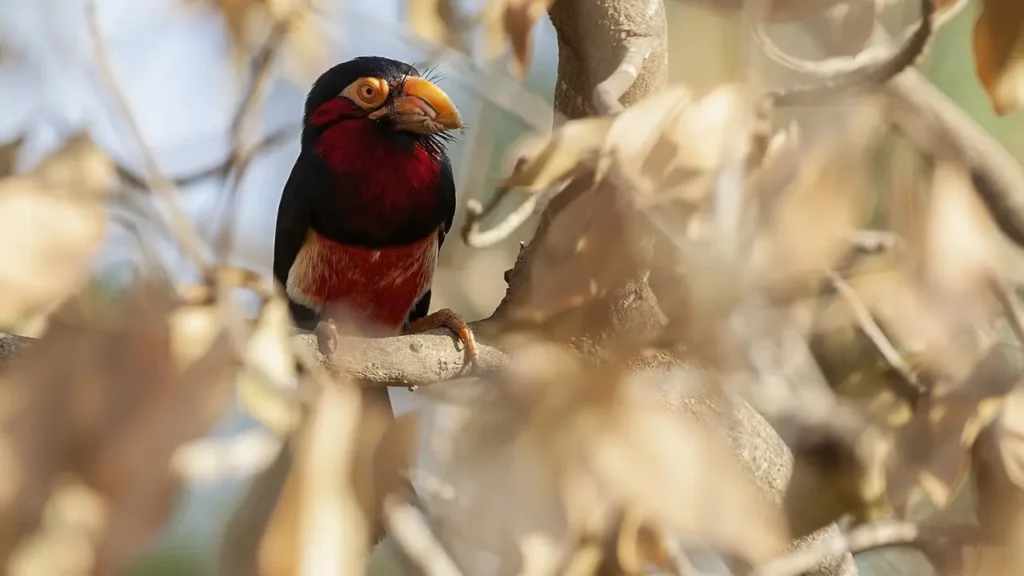
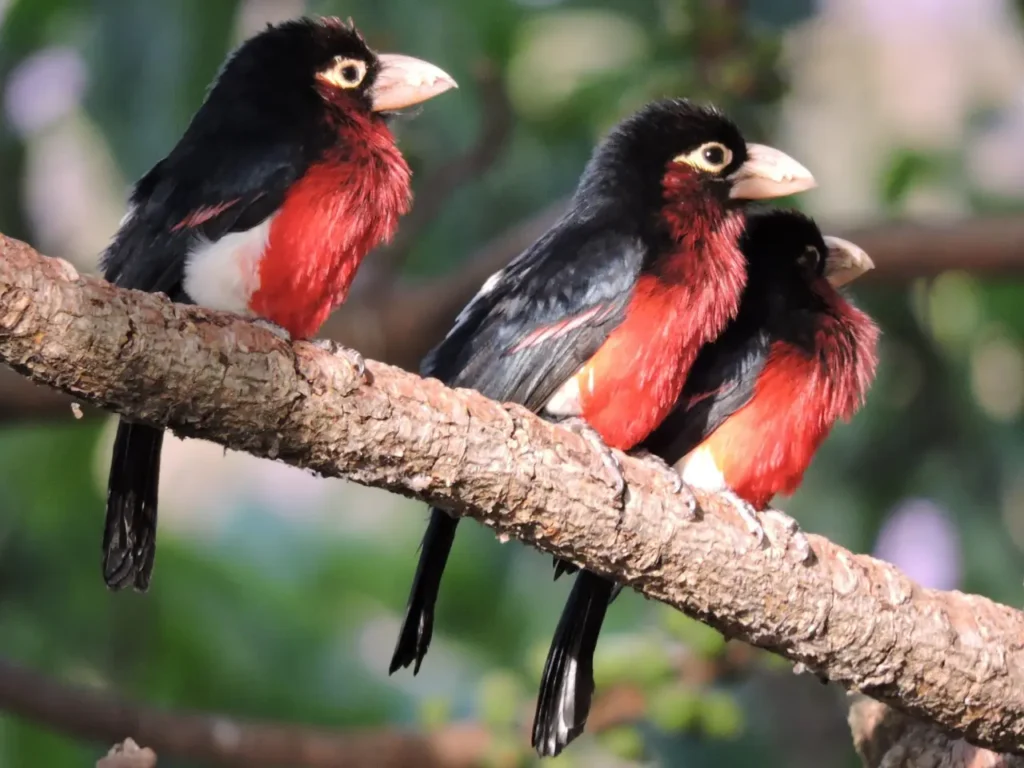
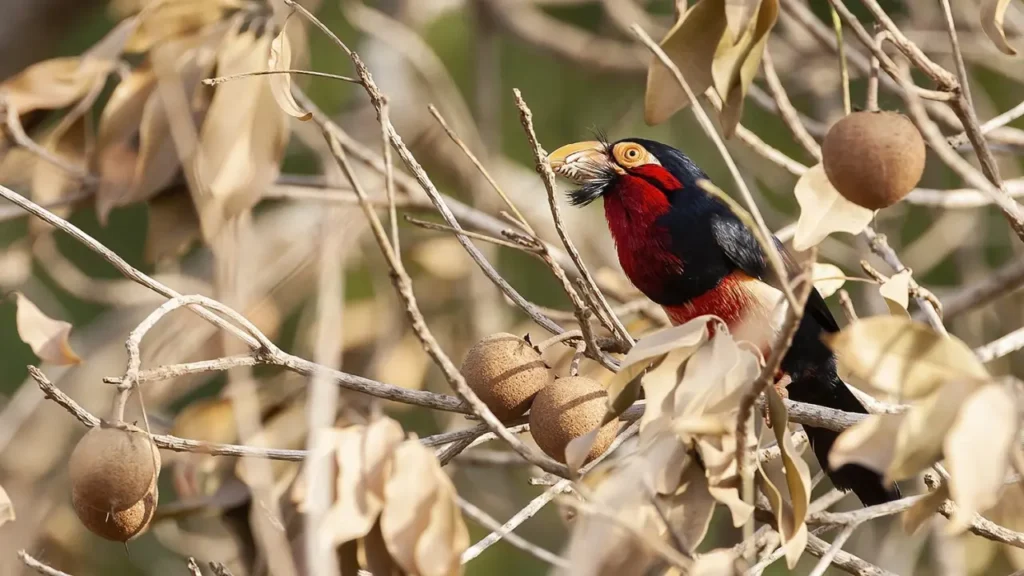
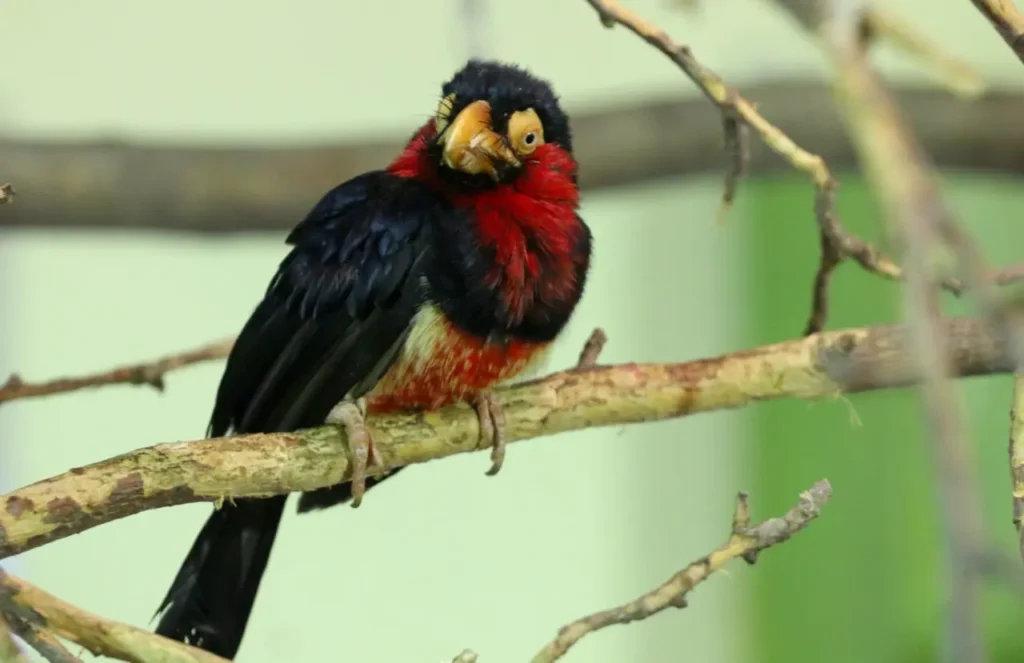

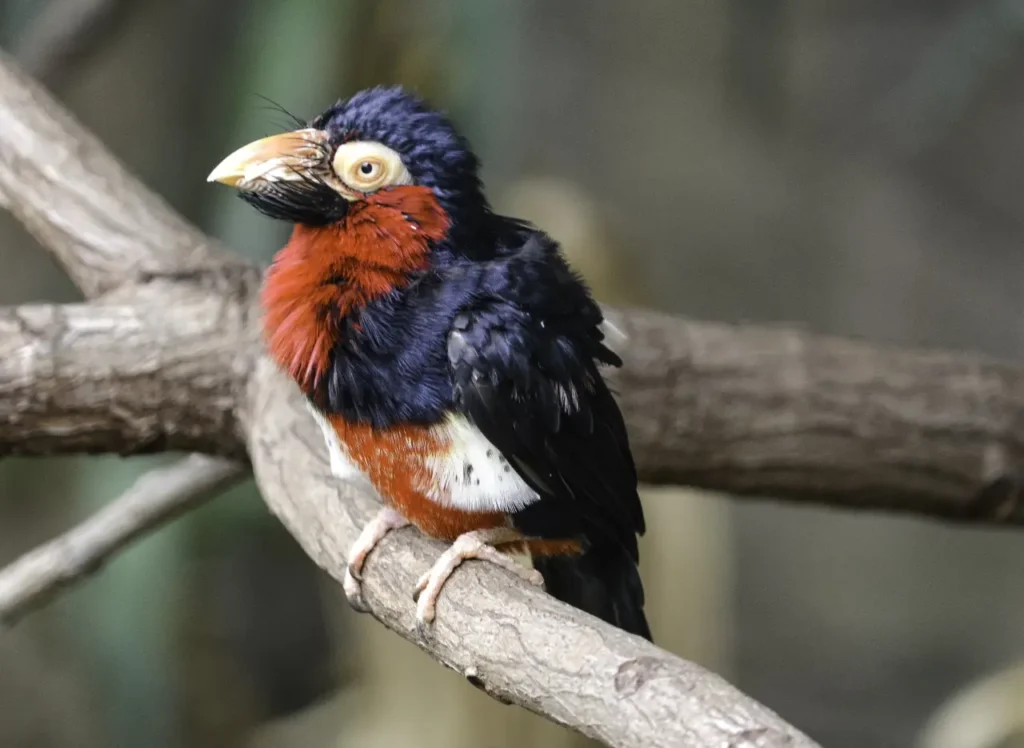

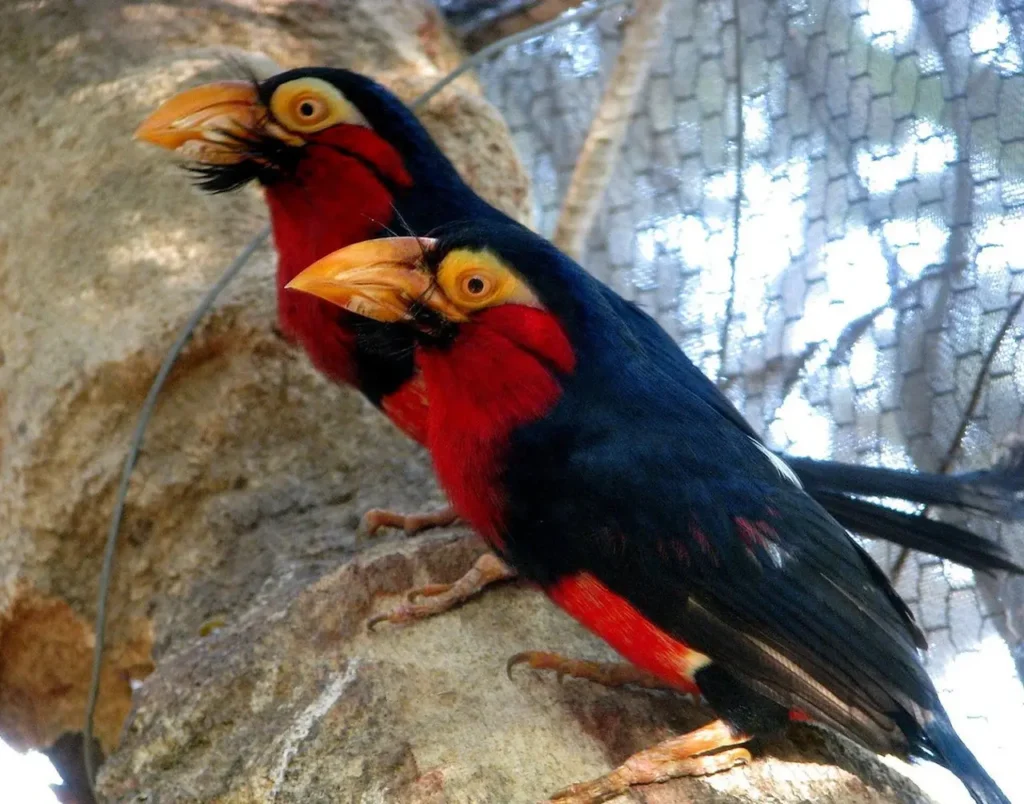
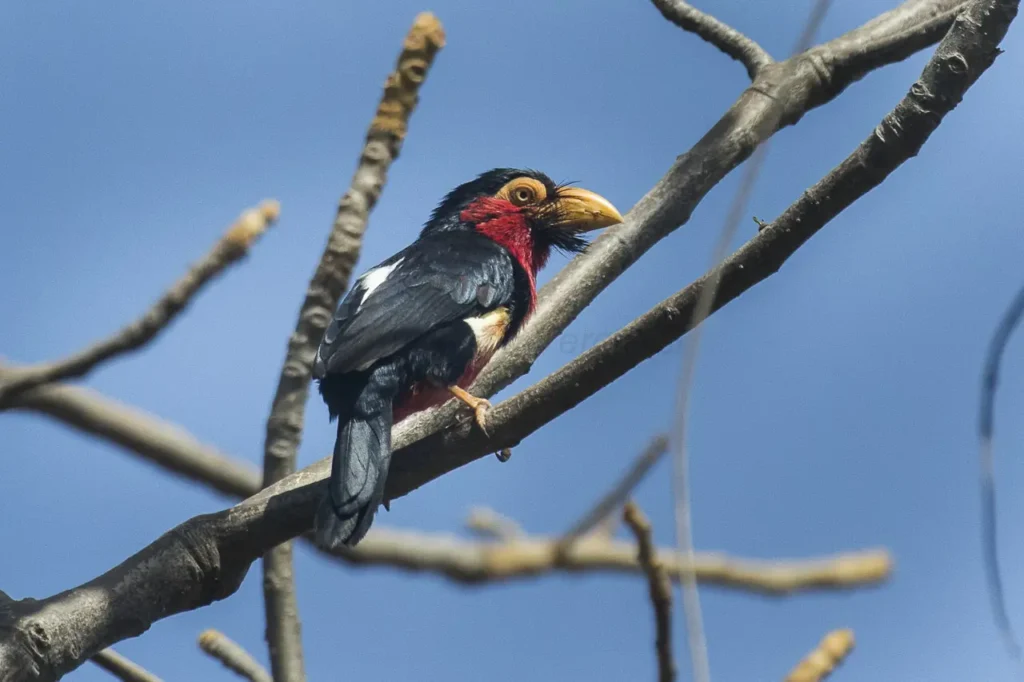
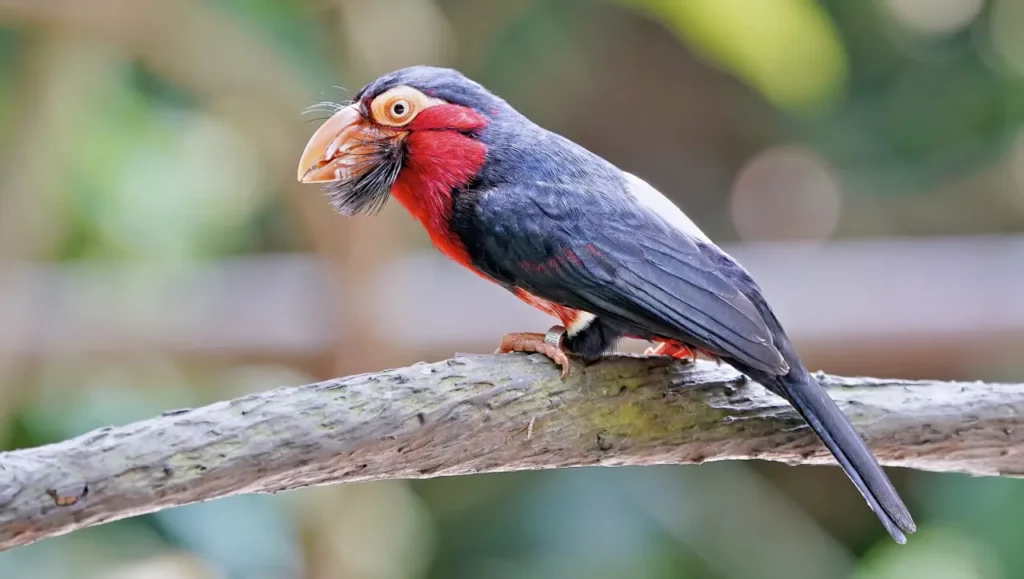

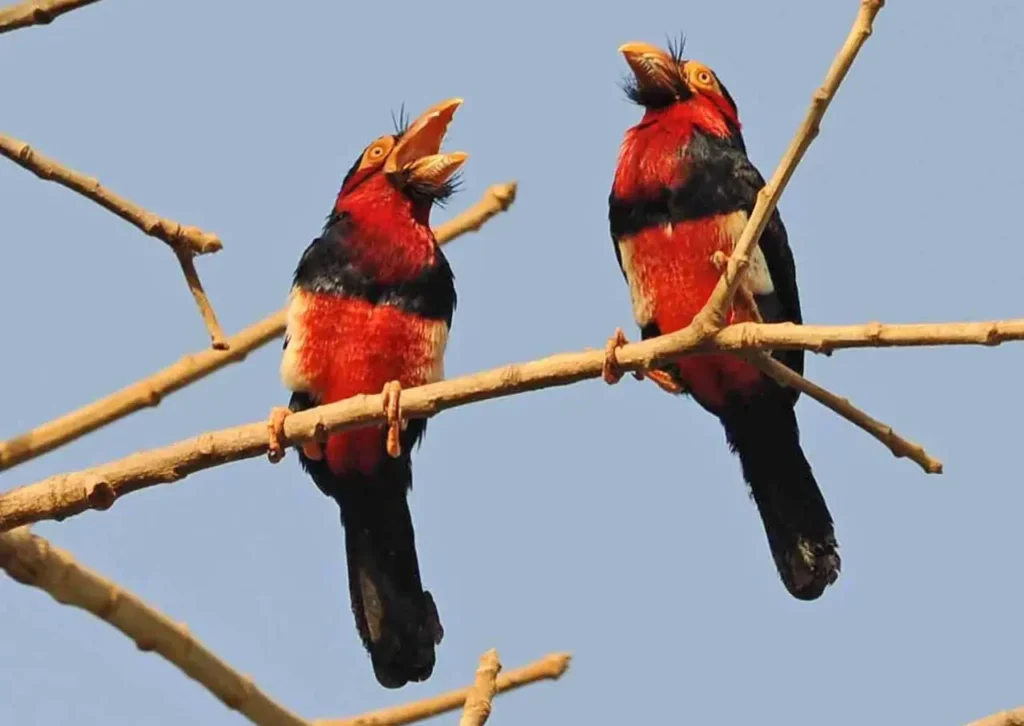
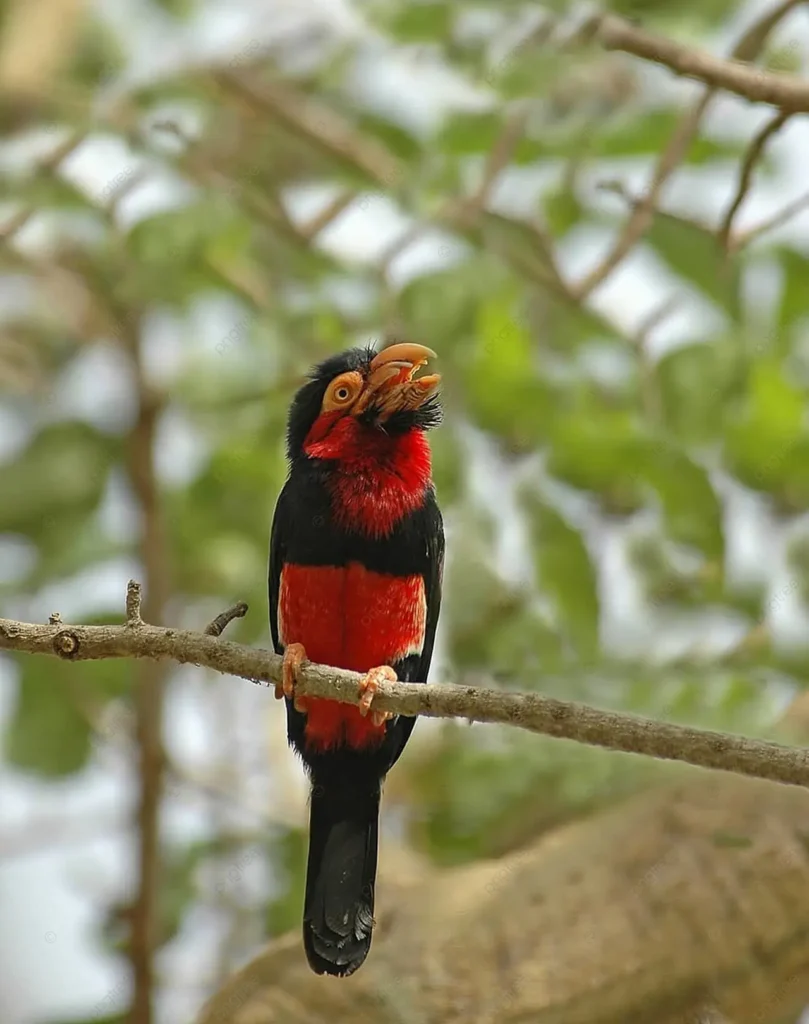
Appearance and Plumage
The Bearded Barbet is a medium-sized bird, measuring approximately 20 centimeters (8 inches) in length. It is instantly recognizable by its vibrant and contrasting colors. The upperparts of the bird are predominantly green, while the belly and breast display a rich golden-yellow hue. The head is adorned with a striking combination of black, red, and yellow feathers, which give it a distinctive and charming appearance.
One of the most distinctive features of the Bearded Barbet is its “beard.” This refers to the long bristles that extend from its chin, creating a beard-like appearance. These bristles are thought to serve a sensory function, helping the bird navigate its surroundings and locate food.
Habitat and Distribution
Bearded Barbets are found in various woodland habitats across sub-Saharan Africa. They can be observed in open woodland, savannahs, and forest edges. These birds are adaptable and can thrive in both dry and moist habitats, as long as suitable food sources and nesting sites are available. Bearded Barbets are non-migratory birds, meaning they do not undertake long-distance seasonal movements.
Diet and Feeding Habits
The Bearded Barbet primarily feeds on fruits, nectar, and insects. It has a specialized bill that is perfectly designed for its feeding habits. The bill is short, stout, and slightly curved, enabling it to easily pluck fruits and extract nectar from flowers. It also uses its bill to catch insects, such as beetles and ants, which form an important part of its diet.
These barbets are known to be frugivorous, meaning they rely heavily on fruit for sustenance. They play an essential role in seed dispersal, as they consume fruits and then excrete the seeds elsewhere, helping to disperse plant species and contribute to forest regeneration.
Behavior and Vocalizations
Bearded Barbets are typically solitary birds, although they may form small family groups during the breeding season. They are often seen perched on tree branches or hopping along the ground in search of food. When disturbed or excited, they may display a distinctive “bobbing” behavior, where they rhythmically bob their heads up and down.
These barbets have a unique and delightful call that adds to their charm. Their vocalizations consist of a series of melodious and repetitive notes, often described as a trilling “prru-prru-prru” or “prruk-prruk-prruk.” Their calls can be heard throughout the day, especially during the breeding season when males may engage in vocal duets to attract mates and establish territories.
Conservation Status and Habitat Protection
The Bearded Barbet is currently listed as a species of least concern by the International Union for Conservation of Nature (IUCN). However, like many bird species, it faces threats such as habitat loss and degradation due to deforestation and agricultural expansion. Maintaining and protecting the woodlands and forest edges where Bearded Barbets thrive is crucial for their long-term survival.
By promoting sustainable land use practices, supporting conservation initiatives, and raising awareness about the importance of preserving habitats, we can contribute to the protection of these colorful and charismatic birds, ensuring that future generations can enjoy the enchanting presence of the Bearded Barbet in their natural habitats.
A Colorful Delight of African Woodlands
The Bearded Barbet stands as a testament to the incredible diversity and beauty found within the avian world. Its vibrant plumage, distinctive features, and charming behavior make it a true delight to observe. By appreciating and protecting the woodlands that serve as their home, we can ensure that the Bearded Barbet continues to enchant and bring joy to the African woodlands for years to come.
